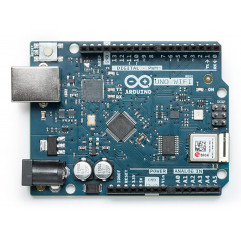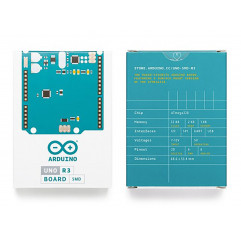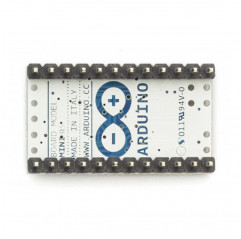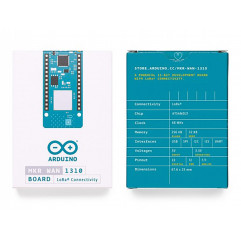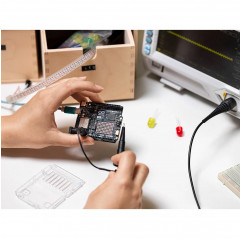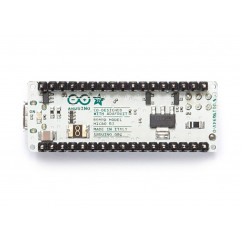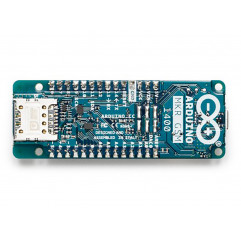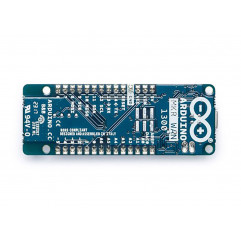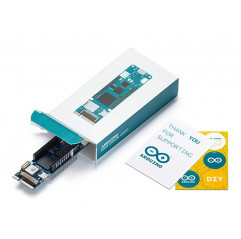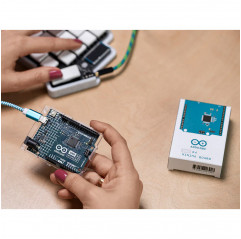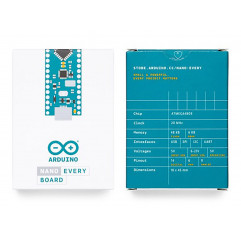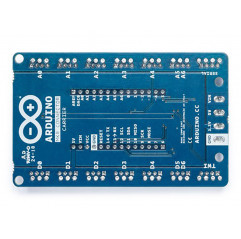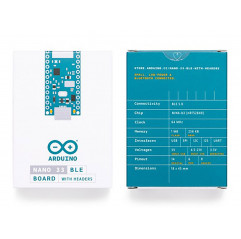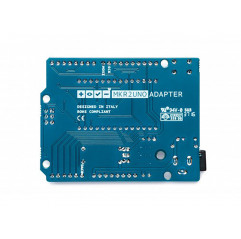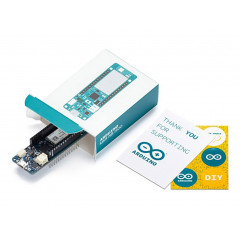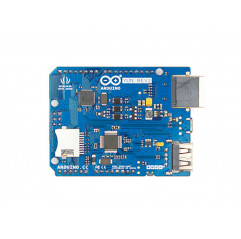ARDUINO UNO WIFI REV2 is the easiest entry point to basic IoT with the standard UNO family form factor. Whether you're looking to build a sensor network connected to your office or home router, or if you want to create a BLE device that sends data to a cell phone, the Arduino UNO WiFi Rev.2 is your one-stop solution for many of the basic IoT application scenarios. Add this board to a device and you'll be able to connect it to a WiFi network, using its secure ECC608 cryptographic chip accelerator. The Arduino Uno's WiFi is functionally the same as the Arduino Uno Rev3, but with the addition of WiFi/Bluetooth and a few other improvements. It incorporates Microchip's brand new ATmega4809 8-bit microcontroller and features an LSM6DS3TR Inertial Measurement Unit (IMU). The Wi-Fi module is a standalone SoC with an integrated TCP/IP protocol stack that can provide access to a Wi-Fi network or act as an access point. It is the u-blox NINA-W102 and (here) you can find the datasheet. Arduino UNO WiFi Rev.2 has 14 digital input / output pins ? 5 can be used as PWM outputs ? 6 analog inputs, a USB connection, a power jack, an ICSP header and a reset button. It contains everything you need to support your microcontroller. Just plug it into a computer with a USB cable or power it with an AC adapter or battery to get started.
This board has the Microchip ATmega4809 microcontroller, but thanks to the compatibility layer included in the core, you can run all the sketches made for UNO's ATmega328P microcontroller on the ATmega4809. You can find more information about using this mode in the Getting Started page of Arduino UNO WiFi Rev.2.
The communication chipset on ARDUINO UNO WIFI REV2 can be either a BLE client or a Bluetooth® host device. Something quite unique in the world of microcontroller platforms. If you'd like to see how easy it is to create a Bluetooth® host or peripheral device, explore the examples in our ArduinoBLE library.
ARDUINO UNO WIFI REV2 is a dual-processor device that invites experimentation. Hacking the WiFiNINA module allows, for example, to use WiFi and BLE / Bluetooth® simultaneously on the board. Another possibility is to have a super lightweight version of Linux running on the module, while the main microcontroller controls low-level devices such as motors or screens. These experimental techniques require advanced hacking on your side. They are possible by modifying the module's firmware, which you can find in our github repositories.
WARNING: this kind of hacking breaks the certification of your WiFiNINA module, do it at your own risk.
If you are looking to upgrade from previous Arduino projects, or if you are only interested in boards with similar functionality, on Arduino you can find:
MKR WiFi 1010: the small form factor version of Arduino UNO WiFi Rev.2, with battery connector and additional I2C port.
Nano 33 IoT: if you need an even smaller form factor, this board sacrifices the battery connector, but the basic functionality is essentially the same.
MKR WiFi 1000: can only run WiFi applications, as it includes a different chipset than MKR WiFi 1010.






